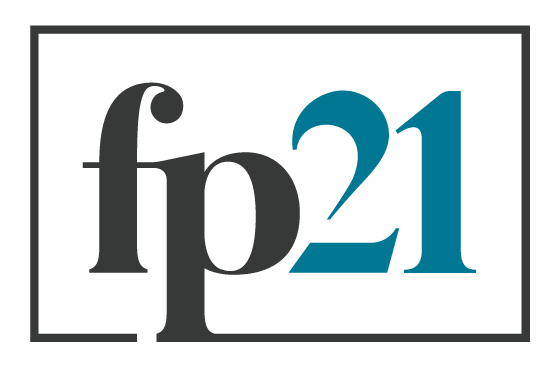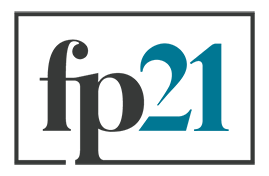Doctrine for Engineering Foreign Policy
By Dan Spokojny | April 9, 2025
Getting strategy right at the Department of State is an essential task. This article digs deeper into how the method might be applied to the work of foreign policy; it serves as a follow-up to an article called From Strategy to Action: Rethinking How the State Department Works. One must hope that policy engineering (or something like it) will be robustly developed and adopted as official State Department doctrine. In the meantime, these ideas can be helpful to officials at the State Department today who are trying to develop more effective foreign policy.
Stage One: Set High-Level Goals
The first stage of policy engineering is to identify high-level goals. This is typically completed by the White House, Congress, or political leadership at the State Department. Pre-existing high-level goals may be found in the National Security Strategy, Congressional budget and appropriations documents, and the Joint Strategic Plan, among other places.
If goals aren’t clearly dictated by existing guidance, strategy engineers must create them, ideally by channeling the Administration and Congress’s priorities. The first step, therefore, is to discern the goals and values of the political leadership. In addition to existing strategy documents, policy engineers might read campaign speeches, executive orders, or articles from key officials.
Make no mistake: setting high-level goals is a political act. But this must not disqualify nonpartisan career staff from leading and participating in this process (in my humble opinion). A bureaucrat’s job is to advance the president’s agenda. Career officials may disagree with aspects of a political agenda, but bureaucratic resistance can result in costly consequences for the agency’s reputation and erode its authority over time.
Regardless of who leads this work, setting high-level goals is the starting point of the policy engineering method. Goals provide the framework that guides the development of specific policies and objectives in later stages. These goals should communicate WHAT needs to be accomplished, but not HOW the work will be done. Goal-setting should consider whole-of-government responses and how different instruments of US national security can work together. Goals should ultimately be formulated as clear statements of success (achieve democratic elections) rather than general statements of principles (value democracy).
At the start of each strategy cycle (perhaps synchronized with the federal budget process), it is useful to gather a diverse team of experts to participate in the goal-setting exercise. The group should discuss likely challenges and opportunities, and brainstorm different end-states that might harmonize with US interests. Policy leaders should solicit ideas widely, and remember that there are no bad ideas during brainstorming.
The next step is to narrow the range of options to the highest priorities. The ITN procedure offers one tool for prioritization: rate each option based on its importance, tractability, and neglectedness. Importance refers to how valuable the solution would be if it worked. Tractibility is the likelihood of success – cost and political viability should be factored in here. Neglectedness is the extent to which others are already working to solve the same problem. For instance, advancing a new nuclear non-proliferation treaty regime might score an 8/10 in importance, a 2/10 in tractability, and a 7/10 in neglectedness, for a total of 17. If a competing policy scored 23, that might be a better option.
How does one know if they have identified the right goals? Goals are, in no small part, an expression of subjective ethics. In a democracy, our elections are the best arbiter of our shared values, and some amount of variation is healthy and natural. Each newly elected leader comes in with a different set of values that has been “endorsed” by the citizenry. (Political appointees, nominated by the president, are an extension of this process). Whereas this stage is largely subjective, the next stage – policy design – asks policymakers to explore as objectively as possible the likely implications of these high-level goals, and craft interventions to achieve the big goals.
Stage Two: Policy Design
The policy design phase breaks down high-level goals into actionable steps. This stage requires more than mere extrapolation; policymakers must carefully evaluate their options to ensure their chosen pathway will most likely achieve their goals.
Good guiding questions for this stage include: What would it look like to take a meaningful step toward achieving our goal over the next few months? How confident are we that this will actually work?
My favorite tool for policy design is the theory of change (ToC). A ToC is a series of if-then statements that detail precisely how change will occur as a result of US action: “If we do X, then Y will occur.” The goal is to reduce ambiguity as much as possible about how high-level goals will be achieved. For example, "Pursue free and fair elections" is a very ambiguous policy design. It would be better to propose, "If we communicate to the host government that all future military assistance will be conditioned on the certification of the Spring 2025 election as free and fair by reputable international observers, then we can help ensure democratic elections in 2026." Additional analysis should explicate exactly how this coercive strategy would operate, including how US military assistance would incentivize democratic growth or how the threat of sanctions could weaken non-democratic impulses.
A strong ToC pushes policymakers to explore the chronological sequence of actions and reactions. For example: “If US publicly conditions military assistance to the government of X upon the allowance of election observers, then the government of X will likely accept election observers. If there are election observers, then the government will respect the legal rights of opposition political parties, resulting in a free and fair election.”
Policy design must strike the right balance between specificity and generality. This entails identifying a limited set of near-term actions that, if pursued over the next 3–12 months, will advance the high-level foreign policy goals. Policies tend to be designed in Washington but implemented abroad, necessitating that the design must provide clear instructions for forward-deployed officials while providing enough flexibility for those closest to the problem to react to obstacles. A well-intentioned policy can be rendered feckless by ambiguity, but there’s also such a thing as too much specificity and micromanagement: “First you will sit down at your computer with a coffee to draft the memo, then…”
The acronym “SMART” helps evaluate whether goals are well designed: every policy goal should be Specific, Measurable, Achievable, Relevant, and Time-Bound. As in the high-level goal phase, brainstorming with an array of experts is an excellent way to develop, evaluate, and prioritize SMART goals.
Policymakers ought to give special attention to whether a policy design is actually “achievable.” When policymakers demand transparency about the set of facts used to support recommendations and invite scrutiny about potential sources of bias, they make better policy in the present. This approach has been pushed by the Foundations of Evidence-Based Policymaking Act, signed into law in 2019, but this sort of rigorous policy evaluation remains uncommon in today’s State Department.
The risk is that a policy may seem logical but fall apart upon inspection. For instance, if financial sanctions are proposed as a tool for pressuring President Putin to end the war in Ukraine, a review of the sanctions literature may illuminate the conditions under which financial coercion has succeeded or failed in the past.
Policy designers should get quite specific about resource requirements at this stage. One must confront the reality that the most effective policy designs may be unaffordable. Competing priorities and limited resources may require narrowing the scope of one’s ambitions. A useful way to evaluate resource allocations is to assign actions to specific offices or team members and estimate financial costs. The ultimate question is always: Which policy design is most likely to be effective and efficient?
The final step of policy design is to develop a plan to continually measure the effectiveness of the policy. Policymaking is an iterative method, not a set-it-and-forget-it microwave meal. A plan to monitor and evaluate implementation will help officials ensure the policy is proceeding according to plan, quickly identify obstacles, and learn more about the impact of their efforts. Feedback is an essential ingredient for the development of expertise over time.
Let’s be clear: there are strong incentives for officials to avoid careful policy design. Telegraphing one’s intentions is like Babe Ruth pointing toward the stadium fence: great if you hit a home run, but you might look like a fool if you strike out. It is much safer for one’s career to set ambiguous goals, promise to appease every stakeholder, and fixate on post hoc signs of progress. One can detect these hidden impulses when officials declare their allegiance to “the art of foreign policy.” A culture that punishes any admission of failure will never have a meaningful strategy process.
Stage Three: Policy Implementation
There to say about how to conduct high-quality implementation beyond the obvious and essential point that policy designs need to be turned into action. As our previous policy engineering article specified:
This entails delivering demarches, negotiating treaties, implementing new projects, or other activities specified in the design stage. With clear policy designs guiding their work, diplomats in the field would be empowered to solve problems that arise during implementation. During implementation, staff would detail their efforts and gather evidence, including objective and subjective judgments, to evaluate progress. Written staff work —primarily in the form of cables from the field, memos to department leadership, and State Department input into interagency meetings — would communicate these judgments, including whether resources are adequate to accomplish the stated policy goal.
Stage Four: Policy Adaptation
Evidence gathered in the field throughout implementation should guide continuous policy adaptation.
The team responsible for policy adaptation might ask itself the following questions: How did the last quarter go? Where did we actually spend our energy? What were our successes? What worked? What went wrong? What can be expanded, and what needs to be fixed or canceled? How can we adjust the allocation of our finite resources?
Managers might use weekly check-in meetings to monitor progress and quickly troubleshoot obstacles that arise. More fundamental questions about policy design can be addressed in quarterly strategy review meetings.
In this sense, all policies are like experiments. The goal is to collect evidence to evaluate the impact of one’s intervention.
Celebrating success is easy. But a healthy culture must also celebrate failure. Leaders should reward team members who identify problems or discover why a policy is failing to achieve its planned objectives.
There is such a thing as too much adaptation. If a policy design is constantly changing, it suggests that policy designers struck an improper balance between specificity and generality. If high-level goals and policy designs are ultra-specific and overly-choreographed, they will be rendered moot by every small change in external circumstances.
Ultimately, the purpose of reviewing policy is to support the next decision rather than merely evaluate the last decision. This ensures that policy adaptation prioritizes learning rather than scorekeeping.
Conclusion
The policy engineering method accomplishes four objectives: 1) ensures policies will effectively advance the president’s foreign policy objectives, 2) facilitates turning ideas into action, 3) helps the bureaucracy participate in a shared vision of success, and, 4) creates a culture of continuous learning.
The suggestions offered here are not intended as rigid instructions. There is no such thing as a perfect policy process. Offices should regularly adapt policy engineering to their own needs.
Ultimately, leadership at the State Department should identify policy engineering (or something similar) as a crucial area for improving US foreign policy and invest in building a more rigorous method. This might entail appointing a team to study and design doctrine for diplomacy that would integrate this discipline into the regular business of the Department of State. Until that day, policy engineering can nevertheless be helpful in improving the quality of US foreign policy.


